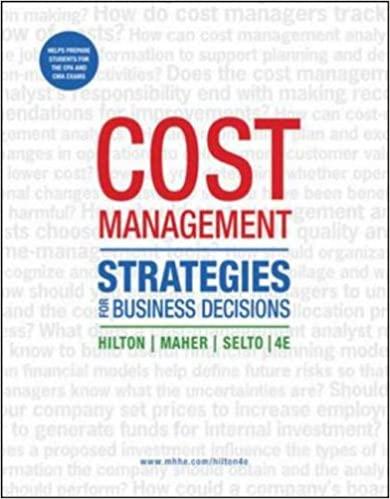Kroger, Inc., operates a 120,000-square-foot supermarket. Each department in the store is charged a Ae rate MitocetcnBaece
Question:
Kroger, Inc., operates a 120,000-square-foot supermarket. Each department in the store is charged a Ae rate MitocetcnBaece share of the cost of the building. The following information concerning two of the departments in the i (LO 3)
store is available.
Department Meat Dry Goods SAlESIO VENUS SHE Mten rt trateretreeT an eines ccee catenamcre ne rn tteiae $250,000 $300,000 COS VO GOOCS SOG eereer werk: seen asierees sae cideasuseubcchwoadadsnrsvackeea: 85,000 90,000 SalanlesandothendirectexPemSeS a i<.du7.. css. atenaseas rics.atss 55,000 70,000 Allocated administrative EXPENSES.........ccceeertecteetereeeees 25,000 27,500 Operating profit before building occupancy Costs............... $ 85,000 $112,500 NEA OCCUDIEANGGUAE TCE) ee arxtaeinn teem ete tenseenece ane 10,000 30,000 Other departments use the other 80,000 square feet. The total building occupancy costs are $800,000 per year.
Required
a. If area occupied is the basis for allocating building occupancy costs, what is the operating profit or loss for each of these two departments?
b. Would you allocate based on something other than square feet if you learned that the dry goods department is located in a back corner of the store? Explain.
Step by Step Answer:

Cost Management Strategies For Business Decisions
ISBN: 12
4th Edition
Authors: Ronald Hilton, Michael Maher, Frank Selto





